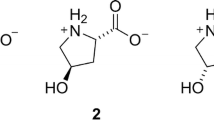Abstract
Treatment of rat hepatocytes with the phosphatase inhibitors okadaic acid or ortho-vanadate had led to an 80% decrease in the bacterial mutagenicity of several aromatic amines metabolically activated by these hepatocytes. This is the most dramatic change yet demonstrated in mutagenicity by phosphorylation modulation. However, incorporation of phosphate into and catalytic activity of cytochromes P450 (CYP) 1A1 and 1A2, the major catalysts for the first step in the toxication of aromatic amines, were unchanged. We therefore investigated whether changes in the phosphorylation status would influence the activities of the N-acetyltransferases NAT1 and/or NAT2, being responsible for one of the two major pathways leading to the ultimate mutagens, the reactive esters which are derived from the N-hydroxylated metabolites of aromatic amines. Hepatocytes were derived from the livers of rats pretreated with CYP1A1/1A2 inducers and from untreated rats using conditions under which the phosphorylation-dependent drastic decrease of the arylamine mutagenicity was observed. Treatments were exposure to 1 mM dibutyryl-cAMP (protein kinase A stimulator), 100 nM okadaic acid or 20 nM calyculin A (preferential inhibitors of serine/threonine phosphatases PP2A and PP1, respectively), 2 mM ortho-vanadate (inhibitor of tyrosine phosphatases), and 50 mM NaF (stimulator of adenylate cyclase and non-specific inhibitor of protein phosphatases). None of the phosphorylation modulators led to a significant change in NAT1 or NAT2 activities. This was true for hepatocytes from rats which had been pretreated with inducers for CYP1A1 and CYP1A2 as well as from untreated rats. The inducers led to the expected increases in CYP1A1 and CYP1A2 but the NAT1 and NAT2 activities remained unchanged. Our study shows that the N-acetyl transferases NAT1 or NAT2, the catalysts responsible for the formation of the highly reactive N-acetoxy derivatives of N-hydroxylated aromatic amines, are not responsible for the drastic decrease in arylamine genotoxicity after treatment of the metabolizing system with protein phosphatase inhibitors. The data also shown that NAT1 and NAT2 are not regulated by the classical xenobiotic metabolizing enzyme inducers nor by any of the phosphorylation modulators used.
Similar content being viewed by others
Author information
Authors and Affiliations
Additional information
Received: 30 April 1997 / Accepted: 20 May 1997
Rights and permissions
About this article
Cite this article
Padma, P., Oesch-Bartlomowicz, B., Hengstler, J. et al. Control of the mutagenicity of arylamines by protein kinases and phosphatases: II. Lack of response of rat liver N-acetyl transferases to phosphorylation modulators. Arch Toxicol 71, 655–659 (1997). https://doi.org/10.1007/s002040050441
Issue Date:
DOI: https://doi.org/10.1007/s002040050441




